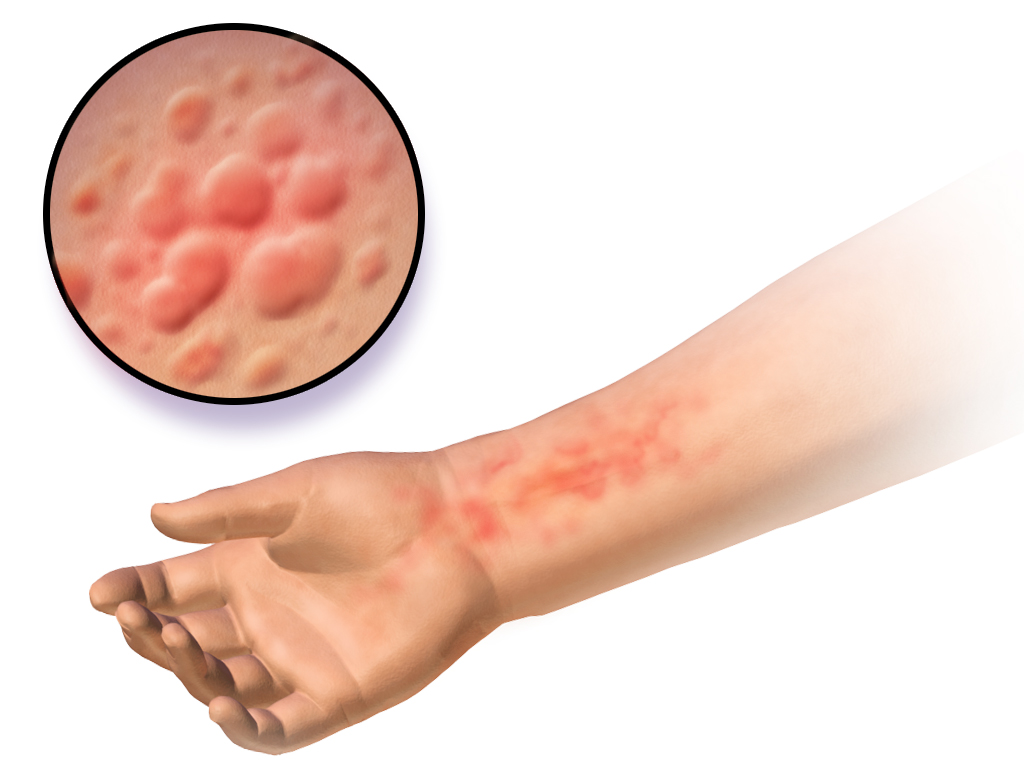We’ve all experienced or noticed it at some point or the other – red, patchy, itchy bumps on our skin that cause irritation. And they often come out of nowhere, with no warning. It’s not unusual – it’s just hives.
What Are Hives?
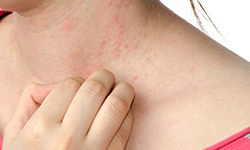
Hives can affect pretty much anyone at any point in time – it can occur at any age, and in any gender or ethnicity. It can also affect any part of the body. The rashes may vary in size from dots as small as a pen tip to coin-sized rashes, to rashes that are as large as a plate! Rashes may connect to form even larger welts.
A hive often goes away in 24 hours or less – but it’s important to note that new hives will form as old ones fade, so the lifecycle of the rash may last a few days or longer. In its acute form, hives usually last up to 6 weeks. Hives that last for more than 6 weeks are called chronic urticaria.
What Are The Signs And Symptoms Of Hives?
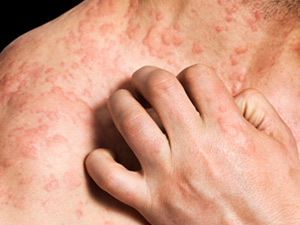
- Slightly swollen or raised reddish-pink patches (aka welts or wheals,) on the surface of the skin
- Welts that occur as red spots
- Welts that occur alone, in a group, or connect over a larger patch of skin
- Welts that change in shape and size
- Swelling that subsides in one spot but reappears at another spot within 24 hours
- Itching accompanied by a stinging or burning sensation around the affected area
What Causes Hives?
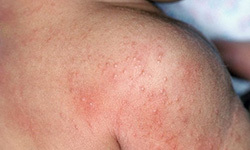
Common triggers of allergic reactions include:
- Foods, including peanuts, tree nuts, shellfish, milk, eggs and citrus fruits
- Animal and animal dander
- Insect bites & stings
- Pollen
- Medicines
- Touching an object or substance you may be allergic to, for example, latex
Infections, like colds, bacterial infections and fungal infections can cause a breakout of hives. Apart from these two broad categories, some other causes of hives are:
- Illnesses like vasculitis, lupus, and thyroid disease
- Exposure to the sun (solar urticaria), heat, cold, or water
- Excessive sweating
- Excessive pressure on the skin, for example, from sitting too long
- Contact with chemicals
- Excessive scratching of the skin surface
- Exercise
Hives can occur within minutes of exposing yourself to the trigger – but you can have a delayed reaction that happensup to two hours later.
Can Stress Cause Hives?
Changes in your body can be linked to emotional stress and tension. So yes – stress can cause hives. When you are exposed to stress, anxiety or tension for any length of time, your immune system begins to falter. And when your immune system is out of balance, it starts sending histamine into the body to fight what is ailing you (in this case, stress.) Histamine is a substance that produces varied effects within the body, including:
- The contraction of smooth muscle tissues in the lungs, uterus, and stomach
- Dilation of blood vessels
- Stimulation of gastric acid secretions in the stomach
- Acceleration of heart rate
Histamine also serves as a neurotransmitter, carrying chemical messages between nerve cells. The effect histamine has on blood vessels is what makes it a crucial player in the body’s immune response – and this is why the body sends histamine to combat stress. Since histamine cannot actually fight or eliminate stress, it shows up as hives on your face, neck, chest and other body parts. In a nutshell, your body is forming an allergic reaction to stress.
How To Treat Hives?
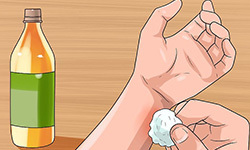
For mild or moderate cases of hives, antihistamines are the most common form of treatment. Antihistamines are a non-sedating medication that relieves symptoms like itching.
If it is a chronic case of hives (lasting longer than 6 weeks,) antihistamines are prescribed on a daily basis to prevent hives from further forming.
Medicines that dermatologists prescribe to treat hives include:
- Antihistamines
- Inflammation-fighting medicine
- Corticosteroids: Medicines like prednisone, which are prescribed only for the short-term use. Due to its side effects, corticosteroids are not advised for the long-term
- Dapsone: an antibiotic that can also relieve inflammation
- Omalizumab: an injectable medicine can help patients with chronic idiopathic urticaria (CIU,) a severe case of hives that can last for months
Remember to consult your dermatologist before going on medication. All medicines have side effects, so it is imperative that you speak to a qualified medical professional first! Find a dermatologist on – www.skinandhairacademy.in

